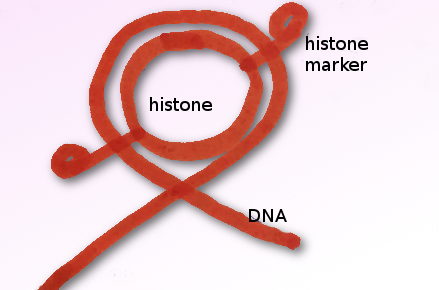Whether our genes are read and how strong is fundamental to our health and metabolism. Crucial for this is the DNA code, but also the epigenome. These are attachments to the DNA and chromosomes that can either release or block gene segments for transcription. In contrast to the genes, these deposits can be modified by environmental factors, for example, through our diet, obesity, or environmental chemicals.
Yingming Zhao, University of Chicago, IL, USA, and colleagues have identified sodium benzoate as another factor influencing our epigenome. The common preservative known as E211 is used to preserve many foods and cosmetics. It may be used in foods up to a concentration of 0.1 %.
The researchers discovered the epigenetic effect of sodium benzoate as they searched in the genome of mammalian cells for yet unknown deposits on the histone. These are envelope proteins around which the DNA winds itself to form chromosomes. The team found a novel histone marker, the lysine benzoylation (Kbz). This attachment consists of a benzoyl group.
The precursor for this epigenetic attachment is a molecule that is formed in the body from for example from sodium benzoate. To test if there is any association, the researchers added small amounts of sodium benzoate to two different cell lines and analyzed their epigenome before and after. They observed a dose-dependent increase in histone-Kbz additions in both cell types. Already an addition of 5 mmol increased these histone deposits dramatically. In part, the number of epigenetic deposits increased 50-fold. According to the researchers, this proves that the preservative sodium benzoate has a measurable and quite strong effect on the epigenome at least in cell cultures.
To find out if these epigenetic changes have a physiological effect, the researchers investigated which genes the histone Kbz marker attached to and how this affects gene activity. The preservative-influenced attachment affects thousands of genes in the cells. In doing so, it often blocks DNA regions that form starting points of transcription. Further analysis revealed that the epigenetic histone marker changed gene activity in several important metabolic pathways, including sugar and insulin metabolism.
The supposedly harmless preservative sodium benzoate could also cause changes in the epigenome and gene activity in our cells—even at relatively low doses. To find out more experiments are needed.
- Lysine benzoylation is a histone mark regulated by SIRT2,
He Huang, Di Zhang, Yi Wang, Mathew Perez-Neut, Zhen Han, Y. George Zheng, Quan Hao, Yingming Zhao,
Nature Communic. 2018.
https://doi.org/10.1038/s41467-018-05567-w




